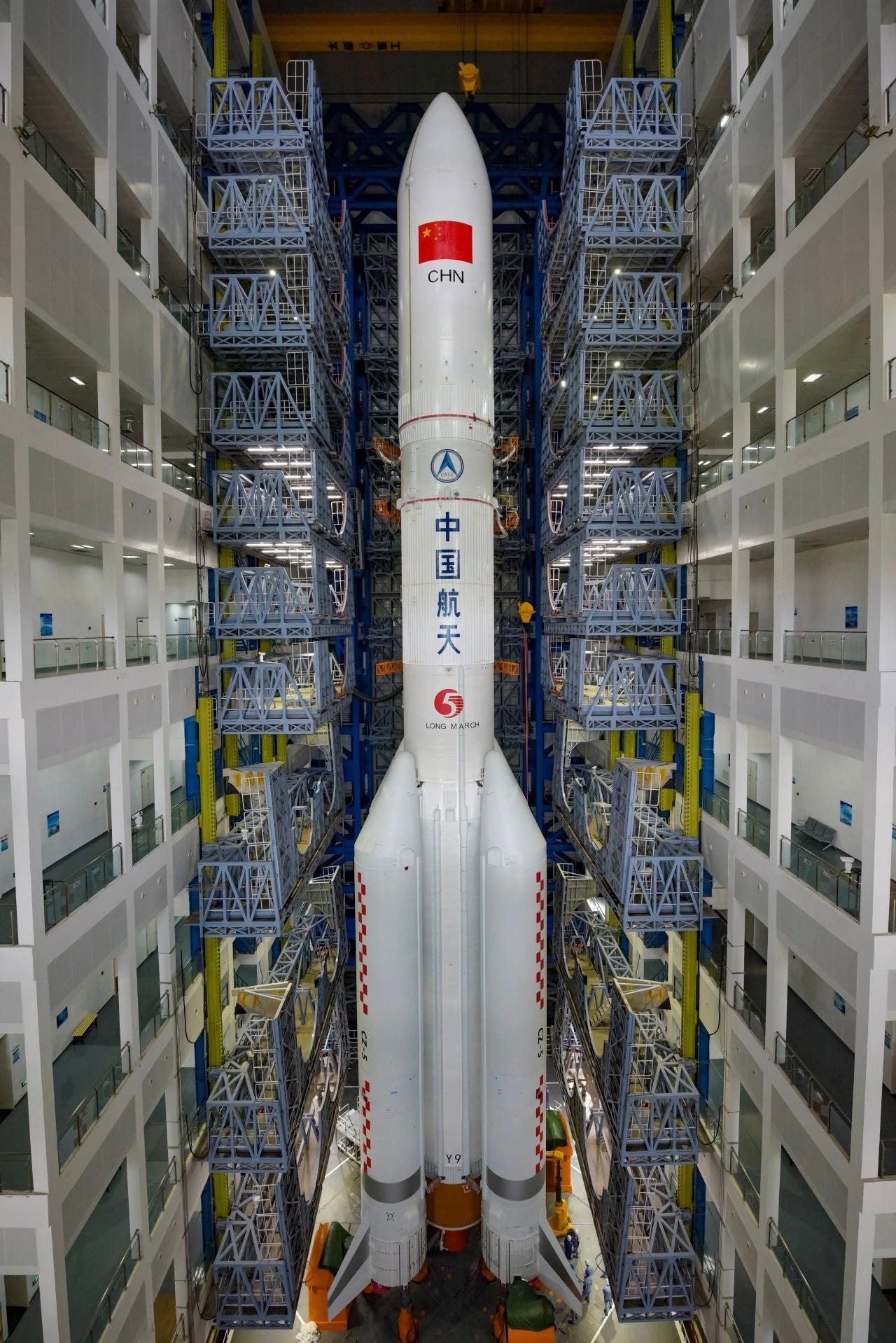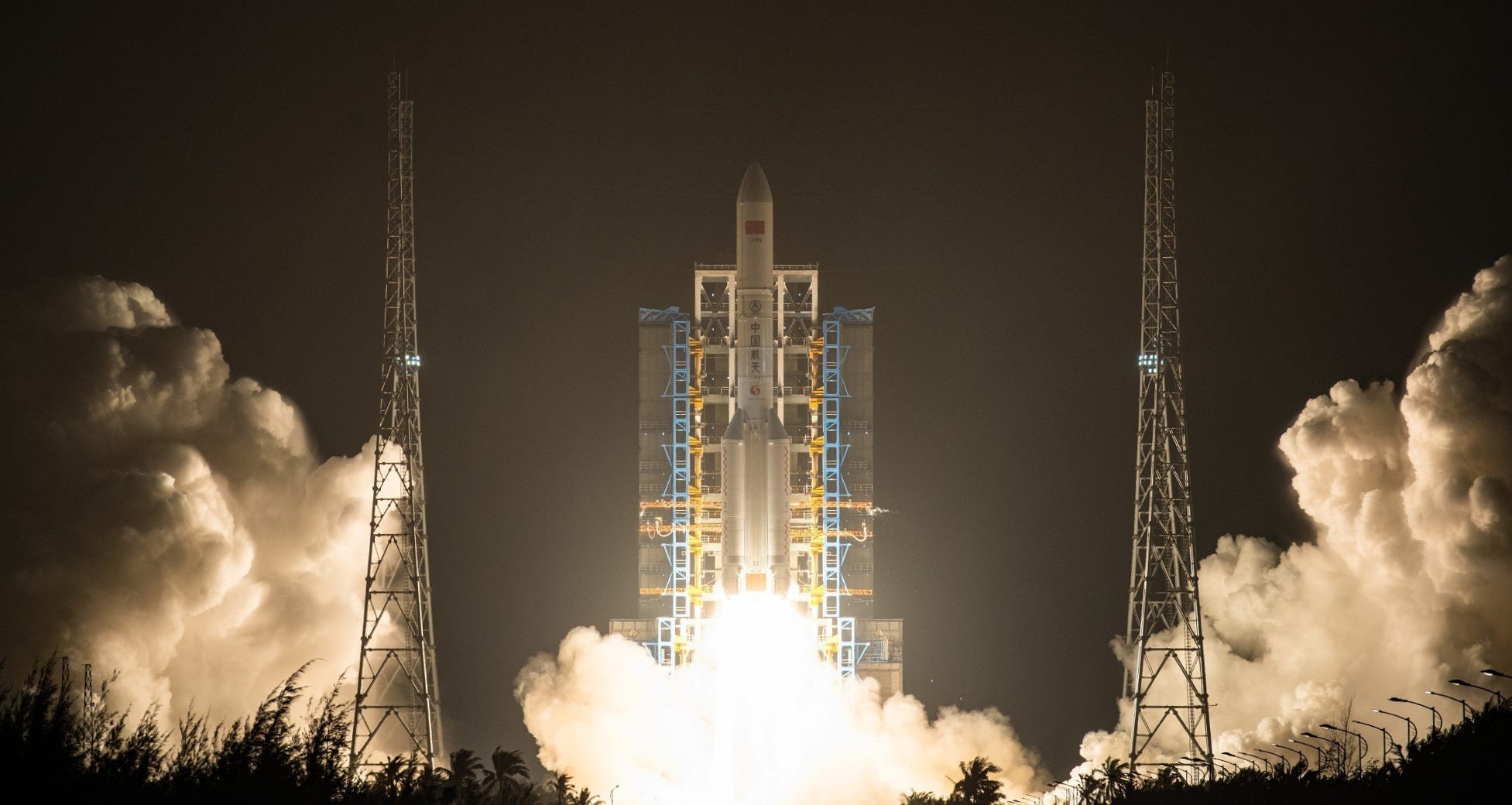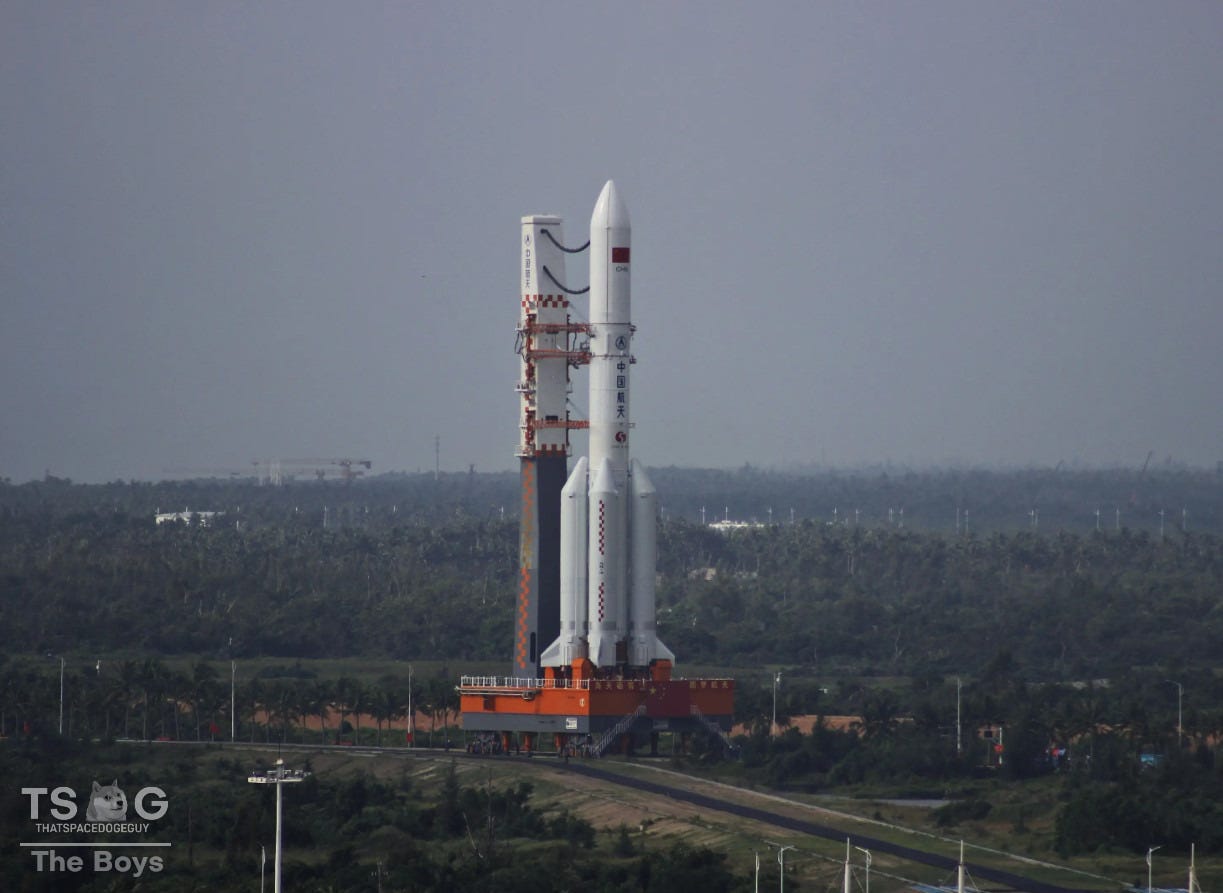Large TJSW Spacecraft Launched Toward Geostationary Orbit [Long March 5 Y9]
This years sixth TJSW satellite has been delivered into a geostationary transfer orbit.
A Long March 5 blasted off in its tallest configuration from Launch Complex 101 at the Wenchang Space Launch Site on October 23rd at 22:30 pm China Standard Time (14:30 pm Universal Coordinated Time), heading into a geostationary transfer orbit with a single satellite.
The sole payload was the TJSW-20 spacecraft (通信技术试验卫星二十号), known as Communication Technology Experimental Satellite-20 in English. This satellite may be on the larger side due to the use of an 18.5-meter-long fairing and the rocket’s ability to send 14,000 kilograms into a geostationary transfer.
Uses for the satellite are set to be communications, radio, television, and data transmission. Other tasks are planned to be for verifying multi-band high-speed throughput communications technologies.
Five other TJSW satellites have been launched this year by older and newer Long March vehicles. Starting in January, TJSW-14 was delivered by a Long March 3B/E, then in March, TJSW-15 rode atop another Long March 3B/E while TJSW-16 hitched a ride on a Long March 7A, which was then followed by TJSW-17 on a Long March 3B/E, and lastly the fifth, TJSW-19, flew on a Long March 3B/E.

Today’s flight was the first time in seventeen months, with the Chang’e 6 mission, that the non-5B variant was used. In the two missions (April and August) with the Long March 5 series since the lunar launch, both flew with the second-stage’s role being replaced by a Yuanzheng-2 to prevent the first-stage core from reaching orbit.
This launch mission also had the Long March 5 utilizing its longer fairing, typically reserved for the Long March 5B, for the third time. When used last time in February 2024, the rocket carried another TJSW communication technology test (通信技术试验) satellite into a geostationary transfer orbit. Before that, for a December 2023 mission, it carried a Yaogan (遥感) optical remote sensing satellite, also to a geostationary transfer orbit.
As part of efforts to bring down costs with the launch vehicle, over forty technical improvements were reported to have been implemented. With those improvements, the preparation times were said to have been shortened too. An eventual aim is to have the Long March 5 series flying ten times a year.
Today’s launch was the 9th mission for the Long March 5, the 16th launch for the Long March 5 series, and the 602nd launch of the Long March launch vehicle series. This was also the 66th launch from China in 2025.
Liftoff footage via ‘The Boys’, as well as 我们的太空, SpaceLens云上天镜, and 找花轮去_ on Weibo. Launch recap via ThatSpaceDogeGuy on YouTube.
Launch livestream replays via ThatSpaceDogeGuy and International Rocket Launches on YouTube.
Check out the previous Long March 5 launch
Ten More GuoWang Satellites Enter Orbit [Long March 5B/YZ-2 Y8]
The Long March 5B, China’s most capable launch vehicle, blasted off from Launch Complex 101 at the Wenchang Space Launch Site on August 13th at 14:43 pm China Standard Time (06:43 am Universal Coordinated Time), heading into polar orbit carrying another group
What is the Long March 5?
This section is for those less familiar with China’s Long March series of launch vehicles.
The Long March 5 is China’s largest and most capable launch vehicle currently in service, and was developed by the China Academy of Launch Vehicle Technology, with the Shanghai Academy of Spaceflight Technology providing the boosters. The two-and-a-half-stage launch vehicle is fuelled with liquid hydrogen and liquid oxygen in its first and second stages, along with rocket-grade kerosene and liquid oxygen in four boosters.
The payload capacity of the launch vehicle is currently as follows:
15,000 kilograms to a 700-kilometer sun-synchronous orbit
14,000 kilograms to a geostationary transfer orbit
13,000 kilograms to medium Earth orbit
9,400 kilograms to a trans-lunar trajectory
6,700 kilograms to a 2,000-kilometer sun-synchronous orbit
6,000 kilograms to a trans-Martian trajectory
5,100 kilograms to geostationary orbit

The Long March 5’s first-stage is powered by two YF-77 engines, which produce 143 tons of thrust using liquid hydrogen and liquid oxygen. To assist with liftoff, the rocket is equipped with four side boosters, each powered by two YF-100 engines that generate 245 tons of thrust using rocket-grade kerosene and liquid oxygen, providing a combined booster thrust of 979 tons. Together, the first-stage and boosters deliver a total thrust of 1,122 tons. The second stage features two YF-75D engines, generating 18 tons of thrust with liquid hydrogen and liquid oxygen.
On the launchpad, the Long March 5 stands at up to 63.2 meters tall, with the longer of its two fairing options, and weighs up to 851,800 kilograms fully fuelled. The first and second stages have a diameter of five meters, while the four boosters have a diameter of 3.35 meters, and the fairing has a diameter of 5.2 meters.
So far, the Long March 5 has only flown from the Wenchang Space Launch Site, on the east coast of Hainan province.




![Ten More GuoWang Satellites Enter Orbit [Long March 5B/YZ-2 Y8]](https://substackcdn.com/image/fetch/$s_!UzIx!,w_1300,h_650,c_fill,f_auto,q_auto:good,fl_progressive:steep,g_auto/https%3A%2F%2Fsubstack-post-media.s3.amazonaws.com%2Fpublic%2Fimages%2F36b5d94c-9dca-4404-98c9-147021c5b877_3840x2084.jpeg)
